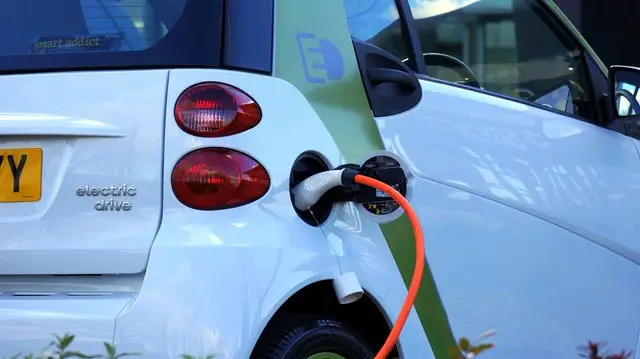Theme:
- On February 1st, 2023, the Indian government released its budget for the fiscal year 2023-24. This year’s budget is particularly significant as it marks the first budget of the Amrit Kaal vision, which aims to transform India into a developed nation by 2047, its 100th year of independence. Therefore, this budget is seen as a roadmap for India’s development over the next 25 years. The budget focuses on the three key pillars of the Vision for Amrit Kaal, which are:- Opportunities for citizens with a focus on youth, Growth in job creation, and a Strong and stable Macro Economic Environment.
Highlights:
- The Indian economy is expected to grow at a rate of 7% in the fiscal year 2022-23, according to the latest estimates. However, the growth rate is expected to moderate slightly in the following fiscal year, with the Economic Survey estimating it to be between 6% to 6.8% for 2023-24.
- The Budget 2023-24 has been formulated with an estimated total expenditure of Rs 45,03,097 crore, a significant increase from the revised estimates of Rs 41,87,232 crore for 2022-23. Despite the increased expenditure, the fiscal deficit is projected to be 5.9 per cent of GDP for 2023-24, which is less than 6.4% in 2022-23. This indicates that the government’s commitment to maintaining fiscal prudence while prioritizing growth and development.
Agriculture:
- Building Digital Public Infrastructure: The budget proposes to build an accessible, inclusive, and informative solution for farmers through the development of digital public infrastructure.
- Atmanirbhar Horticulture Clean Plant Program: The budget has an allocation of Rs. 2,200 crores to boost the availability of disease-free, quality planting material for high-value horticultural crops.
- Global Hub for Millets: The Indian Institute of Millet Research, Hyderabad, will be supported as the Centre of Excellence for this initiative, which aims to promote millets as a healthy and sustainable food option.
- Agriculture Credit: The budget proposes a credit of 20 lakh crore for the animal husbandry, dairy, and fishing sectors.
- Setting up of widely available storage capacity: The budget proposes to enhance farmers’ remuneration by enabling the sale of crops at the appropriate time through setting up widely available storage capacity.
- Setting up of an agriculture accelerator fund: The budget proposes the setting up of an agriculture accelerator fund for encouraging innovative start-ups in rural areas.
Health:
- Establishment of new nursing colleges: The government has proposed to establish 157 new nursing colleges.
- Launch of a new research programme: The government will launch a new programme to promote research in the pharmaceutical sector.
- Encouragement of joint public and private medical research: The government will encourage joint public and private medical research through select Indian Council of Medical Research (ICMR) labs.
- Mission to eliminate sickle cell anaemia: The government has launched a mission to eliminate sickle cell anaemia by 2047.
Education:
- Revamped teacher training: The government has proposed to revamp teacher training through the District Institutes of Education and Training.
- Establishment of a National Digital Library: The government will set up a National Digital Library for children and adolescents.
- Encouragement of physical libraries: The state governments will be encouraged to step up physical libraries at panchayat and ward levels.
- Recruitment of teachers and support staff: The central government plans to recruit 38,800 teachers and support staff for the 740 Eklavya Model Residential Schools in the next three years. This initiative will ensure that the 3.5 lakh tribal students receive quality education and have access to better facilities.
Green Growth:
- Green Hydrogen Mission: India’s government launched the Green Hydrogen Mission to transition to a low-carbon economy.
- The annual production target for green hydrogen: The target is to produce 5 MMT of green hydrogen annually by 2030 using renewable energy sources like wind and solar.
- Battery energy storage systems: Viability Gap Funding will support the development of 4,000 MWH of battery energy storage systems to store and distribute green hydrogen.
- Renewable energy evacuation: An inter-state transmission system will be set up to evacuate and integrate 13 GW of renewable energy from Ladakh to other parts of the country.
- Amrit Dharohar: The Amrit Dharohar initiative will promote the conservation of wetlands for optimal use over the next three years.
- Green Credit Programme: The Environment (Protection) Act will notify the Green Credit Programme to incentivize environmentally sustainable actions by companies, individuals, and local bodies.
- PM-PRANAM: The PM-PRANAM initiative will incentivize states and union territories to promote sustainable agriculture using alternative fertilizers and the balanced use of chemical fertilizers.
- GOBARdhan scheme: 500 new ‘waste to wealth’ plants will be set up under the GOBARdhan scheme to promote the circular economy of reuse and recycling, including CBG plants, urban plants, and community-based plants.
- Bhartiya Prakritik Kheti Bio-Input Resource Centres: 10,000 Bio-Input Resource Centres will be set up to create a national-level distributed micro-fertilizer and pesticide manufacturing network to facilitate natural farming among 1 crore farmers.
- MISHTI: The Mangrove Initiative for Shoreline Habitats & Tangible Incomes (MISHTI) initiative will carry out mangrove plantation to conserve the coastal ecosystem and promote sustainable livelihoods for local communities.
Financial Sector:
- Credit Guarantee for MSMEs: Additional collateral-free guaranteed credit of ₹2 lakh crore for MSMEs.
- National Financial Information Registry: A central repository of financial information for the efficient flow of credit.
- Azadi Ka Amrit Mahotsav Mahila Samman Bachat Patra: A new small savings scheme, Mahila Samman Savings Certificate (MSSC), will be available for a two-year period up to March 2025. This scheme will offer a deposit facility of up to ₹2 lakhs in the name of women or girls for a tenor of 2 years at a fixed interest rate of 7.5% with a partial withdrawal option.
- Senior Citizens Benefits: Enhancement of maximum deposit limits for Senior Citizen Savings Scheme and Monthly Income Account Scheme.
- Fiscal Management: 50-year interest-free loan to states for capital expenditure and fiscal deficit allowed at 3.5% of GSDP with 0.5% tied to power sector reforms.
Youth Development
- Skill India International Centres: The government plans to set up 30 Skill India International Centres across different states to skill the youth for international opportunities.
- Unified Skill India Digital Platform: The government aims to enable demand-based formal skilling through a Unified Skill India Digital Platform. This platform will link employers, including MSMEs, and facilitate access to entrepreneurship schemes.
- National Apprenticeship Promotion Scheme: To provide stipend support to 47 lakh youth in three years, the government will roll out Direct Benefit Transfer under a pan-India National Apprenticeship Promotion Scheme.
- Boosting Tourism: The government plans to select at least 50 destinations through challenge mode and develop them as a complete package for domestic and foreign tourists. Sector-specific skilling and entrepreneurship development will be dovetailed to achieve the objectives of the ‘Dekho Apna Desh’ initiative. Tourism infrastructure and amenities will also be facilitated in border villages under the Vibrant Villages Programme.
- Unity Mall: The government plans to set up a Unity Mall in the state capital or the most prominent tourism centre or the financial capital. This mall will promote and sell local products such as ODOPs (one district, one product), GI products, and other handicraft products.
Infrastructure and Development:
- 5G Services: 100 labs for developing applications using 5G services will be set up in engineering institutions.
- Lab Grown Diamonds: It is a technology-and innovation-driven emerging sector with high employment potential. Grant for R&D will be provided to one IIT.
- The increased outlay for Investment: Increased capital investment outlay to ₹10 lakh crore, which is 3.3% of GDP, will drive growth and create jobs.
- Infrastructure Finance Secretariat: Establishing an Infrastructure Finance Secretariat to enhance opportunities for private investment in infrastructure.
Direct Tax:
- No income tax income up to Rs.7 lakh: In the new tax regime, individuals with an income of up to Rs.7 lakh will not have to pay any income tax.
- Changes in the tax structure: The tax structure in the new personal tax regime has been changed by reducing the number of slabs to five and increasing the tax exemption limit to ₹3 lakh.
- Reduction in surcharge rate: The highest surcharge rate on income above ₹5 crores will be reduced from 37% to 25% under the new regime.
- Enhanced limits of presumptive taxation: Micro Enterprises can avail of presumptive taxation up to ₹3 crores, and professionals with a cash payment of less than 5% can avail of it up to ₹75 lakhs.
- Concessional tax rate to new co-operatives: New co-operatives that commence manufacturing by 31st March 2024 can benefit from a concessional tax rate of 15%.
- The higher limit for cash deposits and loans by PACS and PCARDBs: Primary Agricultural Co-operative Societies (PACS) and Primary Co-operative Agriculture and Rural Development Banks (PCARDBs) can deposit and lend up to ₹2 lahks per member in cash.
- Increase in TDS limit: The TDS limit on cash withdrawals is increased to ₹3 crores for cooperative societies.
- Extension of income tax benefits to start-ups: The date of incorporation for income tax benefits to start-ups will be extended to 31st March 2024.
- The time limit for carry forward of losses for start-ups: The time limit for carry forward of losses on a change of shareholding of start-ups is increased from 7 years of incorporation to 10 years.
- Exemption of income of authorities, boards and commissions: Income of authorities, boards and commissions set up by the states and Union will be exempted from income tax in certain sectors.
- Extension of tax benefits to funds relocating to IFSC, GIFT city: The period of tax benefits to funds relocating to IFSC, GIFT city will be extended till 31st March 2025.
GST:
- Composite taxpayers, which are allowed to do intra-state supply, were restricted to not partnering with e-commerce operators to supply goods and services. But now the Amendment of section 10 of GST law, the word “goods” is been removed. Now the composite taxpayers will be allowed to partner with e-commerce operators to supply goods. This will go into effect on 1st October 2023.
- The government has reduced the compounding of offences under GST from the present range of 50% to 150% of tax amount to the range of 25% to 100%. This is expected to provide relief to small taxpayers who face challenges in complying with the complex GST laws.
- The government has raised the minimum threshold of tax amount for launching prosecution under GST from ₹ 1 crore to ₹2 crores. This move is expected to reduce litigation and provide relief to small taxpayers.
- Sections 37, 39, 44 and 52 of the CGST Act, 2017 are amended to restrict the filing of returns to a maximum period of 3 years from the due date. This is expected to simplify the GST compliance process and reduce the compliance burden on taxpayers.
- The Customs Act, of 1962 is amended to specify a time limit of nine months from the date of filing the application for passing the final order by the Settlement Commission. This is expected to reduce the time taken for the resolution of disputes related to customs.
- The government has reduced the number of basic customs duty rates on goods, other than textiles and agriculture, from 21 to 13. This is expected to simplify the customs duty structure and reduce the compliance burden on taxpayers.
Conclusion:
The Budget 2023 for India is a critical step towards achieving its vision of becoming a developed nation by 2047. With a focus on inclusive growth through opportunities for citizens, job creation, and macroeconomic stability, the government has proposed several measures to promote sustainable and equitable growth. From empowering rural startups to incentivizing environmentally sustainable actions, the budget lays the foundation for a strong and resilient economy that benefits all.
The Indian budget’s significance cannot be overstated, as it plays a critical role in shaping not only India’s future but also the global economy. The budget’s sheer size and scale are evident from the fact that it surpasses the total economies of many countries, including Ireland, Norway, the United Arab Emirates, Egypt, Bangladesh, and many more. This underscores the importance of the budget in driving India’s economic and social policies and their implications for its citizens and the world at large. With the government’s commitment to fiscal prudence and growth, India is set to emerge as a global economic leader in the coming years.
Your Turn…
What’s your take on Union Budget 2023-24? Express your point of view through the comment section below. And subscribe to our blog to read answers to the trending GD topics.
Copyright @ Group Discussion Ideas.








